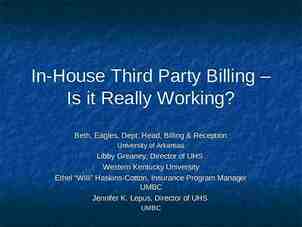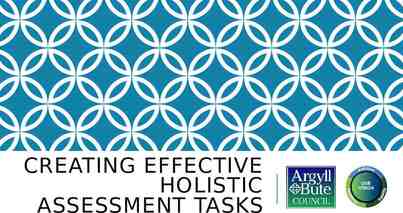Quality Assurance: Looking for Quality Data I know it is in here
31 Slides2.06 MB
Quality Assurance: Looking for Quality Data I know it is in here somewhere Presented by The Early Childhood Outcomes Center Revised January 2013 1
Activity What factors work to improve the quality of your data? What factors work to lessen the quality of your data? How to address these factors? Early Childhood Outcomes Center 2
Take Home Message If you conclude the data are not (yet) valid, they cannot be used for program effectiveness, program improvement or anything else. What do you if the data are not as good as they should be? Answer: Continue to improve data collection through ongoing quality assurance Early Childhood Outcomes Center 3
Many steps to ensuring quality data Good data collection/Training Before During Good data system and data entry procedures Ongoing supervision of implementation Feedback to implementers Refresher training Review of COSF records After Data analyses for validity checks 4
Many steps to ensuring quality data Good data collection/Training Before During Good data system and data entry procedures Ongoing supervision of implementation Feedback to implementers Refresher training Review of COSF records After Data analyses for validity checks 5
Promoting quality data Training and support before and during data collection Analysis of the data after data collection Data system and verification after data collection Early Childhood Outcomes Center 6
Promoting Quality Data Through training and communication related to: Assessment Understanding the COS process Age expectations Data entry Early Childhood Outcomes Center 7
Promoting Quality Data Through training materials, such as: Video team and child examples Written child examples “Quizzes” for ensuring learning Refresher trainings – Beware of Drift!! Early Childhood Outcomes Center 8
Promoting Quality Data Through data systems and verification, such as: Data system error checks Good data entry procedures Early Childhood Outcomes Center 9
Many steps to ensuring quality data Good data collection/Training Before During Good data system and data entry procedures Ongoing supervision of implementation Feedback to implementers Refresher training Review of COSF records After Data analyses for validity checks 10
Ongoing supervision Review of the process – Is the process high quality? – Are teams reaching the correct rating? Methods – Observation – Videos Early Childhood Outcomes Center 11
Quality Review of COS Team Discussion 1. Do all team members participate in the discussion? 2. Is parent input considered in the rating? Give examples. 3. Is the team documenting the rating discussion? Give examples. 4. Does the team discuss multiple assessment sources? What are they? Early Childhood Outcomes Center 12
Quality Review of COS Team Discussion 5. Does the team describe the child’s functioning, rather than just test scores? Give examples. 6. Does the discussion include the child’s full range of functioning, including skills and behaviors that are age appropriate, immediate foundational, and leading to immediate foundational? Give examples. Early Childhood Outcomes Center 13
Quality review through process checks Provider surveys – Self assessment of competence – Knowledge checks – Process descriptions (who participates?) – Identification of barriers Kansas’ survey Alaska’s survey Early Childhood Outcomes Center 14
Questions from Alaska’s Survey 3. How would you rate your own level of proficiency with the COSF process? (please select only one) I am confident I know how to do it, and I do it well I know how to do it, but I need some more practice and assistance I understand it to a point, but I need more training I do not know how to do this yet 4. Some cases are different from others, but of the choices below, which process seems to be the most typical in your experience? (please select only one) I gather information and determine COSF ratings on my own I gather information and consult with another provider to determine COSF ratings I gather information and consult with the family to determine COSF ratings I gather information, discuss it with a team and the team determines the COSF ratings Early Childhood Outcomes Center 15
Ongoing Supervision Feedback to teams is critical Refresher training Beware of: – Auto pilot – Drift Early Childhood Outcomes Center 16
Quality Review of COS Team Discussion: Activity 1.Observe team video 2.Evaluate quality Early Childhood Outcomes Center 17
Many steps to ensuring quality data Good data collection/Training Before Good data system and data entry procedures Ongoing supervision of implementation During Feedback to implementers Refresher training After Review of COSF records Data analyses for validity checks 18
Quality Review of Completed COS Forms Is the COSF complete? Is there adequate evidence for the basis for the rating? Does the evidence match the appropriate outcome area? Is the evidence based on functional behaviors? Early Childhood Outcomes Center 19
Quality Review of Completed COS Forms Is there evidence that the child’s functioning across settings and situations considered? Are the ratings consistent with the evidence? Early Childhood Outcomes Center 20
Quality Review of COS Forms: Activity Review completed COS Form with errors Early Childhood Outcomes Center 21
Promoting quality data through data analysis Examine the data for inconsistencies If/when you find something strange, look for other data that might help explain it. Is the variation caused by something other than bad data? Early Childhood Outcomes Center 22
The validity of your data is questionable if The overall pattern in the data looks ‘strange’ – Compared to what you expect – Compared to other data – Compared to similar states/regions/school districts Early Childhood Outcomes Center 23
COS Ratings - Fall Rating 1 2 3 4 5 6 7 Class 1 Class 2 Class 3 Class 4 3 1 1 2 4 1 2 2 5 2 3 3 6 3 2 4 1 4 5 4 1 5 5 4 0 4 2 1 24
Outcome 3: Appropriate Action Spring Fall 1 2 3 4 5 6 7 total 1 1 4 2 2 1 1 5 6 9 3 1 26 3 2 15 14 27 19 6 83 4 4 4 21 39 28 12 108 5 1 12 14 71 86 48 232 6 1 3 21 48 63 136 2 18 23 56 99 60 185 207 186 691 7 Review Total 2 13 38 7
OSEP Categories Class 1 Class 2 Class 3 (%) (%) (%) e. Maintained Age Appro Trajectory 23 16 24 d. Changed Traj – Age Appro 15 23 13 c. Changed Traj – Closer to Age Appropriate 32 34 37 b. Same Trajectory -Progress 28 21 25 a. Flat Trajectory – No Prog. 2 6 1 OSEP Categories 26
Questions to ask Do the data make sense? – Am I surprised? Do I believe the data? Believe some of the data? All of the data? If the data are reasonable (or when they become reasonable), what might they tell us? Early Childhood Outcomes Center 27
Validity Validity refers to the use of the information Does evidence and theory support the interpretation of the data for the proposed use? Or Are you justified in reaching the inference you are reaching based on the data? Standards for Educational and Psychological Testing (1999) by American Educational Research Association, American Psychological Association, National Council on Measurement in Education Early Childhood Outcomes Center 28
The validity of your data is questionable if: ? Early Childhood Outcomes Center 29
The validity of your data is questionable if: .not all providers are not knowledgeable about in the COS process not all providers are careful with the COS process the data look “strange” etc. Early Childhood Outcomes Center 30
Many steps to ensuring quality data Good data collection/Training Before During Good data system and data entry procedures Ongoing supervision of implementation Feedback to implementers Refresher training Review of COSF records After Data analyses for validity checks 31




































